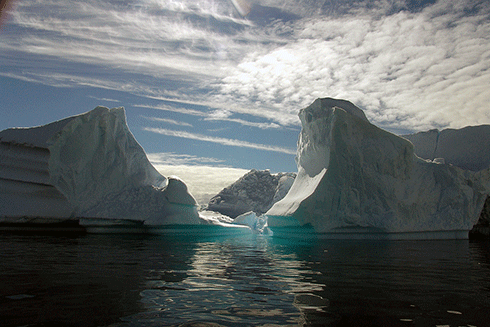
|
Published: 19 May 2014
Rising CO2 pushes cold air south, away from Australia
Researchers have found that rising CO2 levels in the atmosphere are strengthening and pushing Southern Ocean winds – which have historically delivered rain to southern Australia – further south towards Antarctica.

|
|
Antarctic ice cores and tree rings show that Southern Ocean winds are the strongest they have been for 1000 years. Credit:
Horacio Lyon/CCBY-NC2.0
|
The Australian National University-led research team says this is why Antarctica is not warming as much as other continents, and why southern Australia is recording more droughts.
The ANU’s Nerilie Abram said the findings explained the mystery over why Antarctica was not warming as much as the Arctic, and why Australia faces more droughts.
‘With greenhouse warming, Antarctica is actually stealing more of Australia's rainfall. It's not good news – as greenhouse gases continue to rise we'll get fewer storms chased up into Australia.
‘As the westerly winds are getting tighter they're actually trapping more of the cold air over Antarctica.
‘This is why Antarctica has bucked the trend. Every other continent is warming, and the Arctic is warming fastest of anywhere on earth.’
While most of Antarctica is remaining cold, rapid increases in summer ice melt, glacier retreat and ice shelf collapses are being observed in Antarctic Peninsula, where the stronger winds passing through Drake Passage are making the climate warm exceptionally quickly.
Until this study, published in Nature Climate Change, Antarctic climate observational data were available only from the mid-20th century.
By analysing ice cores from Antarctica, along with data from tree rings and lakes in South America, Dr Abram and her colleagues were able to extend the history of the westerly winds further back over the last millennium.
‘The Southern Ocean winds are now stronger than at any other time in the past 1000 years,’ Dr Abram said.
‘The strengthening of these winds has been particularly prominent over the past 70 years, and by combining our observations with climate models we can clearly link this to rising greenhouse gas levels.’
Study co-authors Dr Robert Mulvaney and Professor Matthew England said the study answered key questions about climate change in Antarctica.
‘Strengthening of these westerly winds helps us to explain why large parts of the Antarctic continent are not yet showing evidence of climate warming,’ said Dr Mulvaney, from the British Antarctic Survey.
‘This new research suggests that climate models do a good job of capturing how the westerly winds respond to increasing greenhouse gases,’ added Professor England, from the Climate Change Research Centre at UNSW.
‘This isn't good news for farmers reliant on winter rainfall over the southern part of Australia.’
The research was aided by the National Computational Infrastructure’s Raijin supercomputer.
Source: ANU



